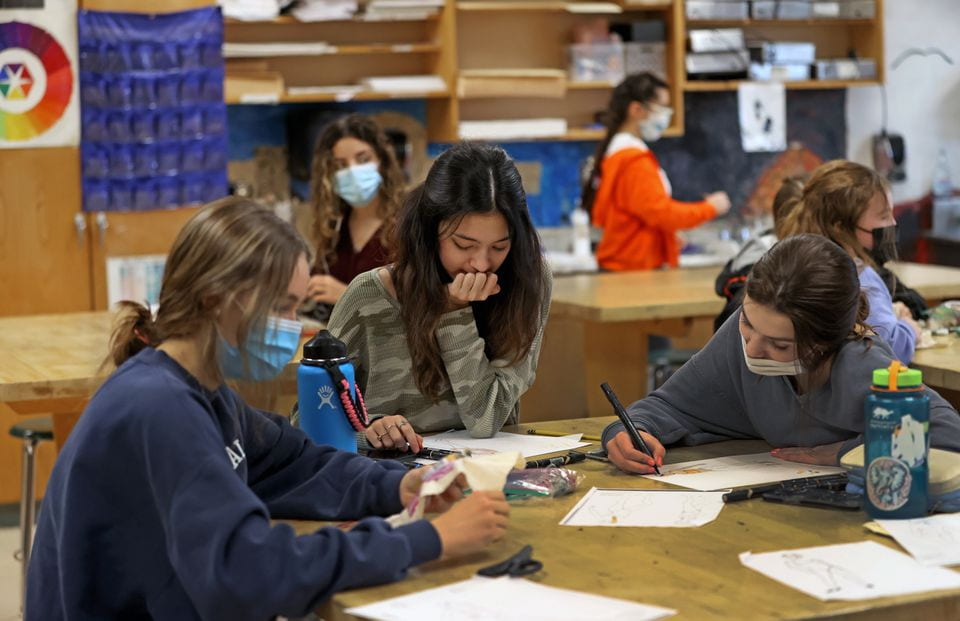
Living your daily life, you need no reminder of how climate has affected people. Stark warnings to use less water, drive less, or to be mindful of plastic cutlery or straws are being pushed on people everywhere, directly the the consumer. But, if you drive out of –say, Sacramento, CA– the hostile central valley (an inhospitable and bone-dry landscape by all signs), you soon start to see small dottings of unnatural greenery. Farms, which, by the look of things, aren’t restricted by the water shortages that everyday consumers are pushed to worry about.
It’s not just water, either. Overall carbon emissions, meaning the “net” carbon of a company produced by all their activity, is overwhelmingly made up by private companies as well. Over 71% of all carbon emissions come from 100 companies, who, according to a study conducted by CO2 AI and BCG, have no intentions of stopping. Even with measures put in place by people concerned about the environmental impact they’re producing, only 14% of all companies surveyed reduced their emissions in the last 5 years. For context, total carbon emissions –those being fossil fuels and byproducts of industry– are estimated around 37 Billion Metric tons annually. If these 100 companies, who make up a tiny portion of all population around the world, contribute 71% of these emissions, they alone produce 26 Billion metric tons of carbon dioxide each year –with no signs of stopping.
It should also be important to emphasize why it matters that the focus shifts to companies wrongdoings, instead of citizens. It is not to shift the blame, but rather, to assign the appropriate responsibilities to who –or what– is doing the harm. A single person cannot do as much damage as a coporate entity. Even if you did everything carbon negative –drove a fuel innefficient car, kept an expansive non-native lawn, and ate meat, among other things– it would be nearly impossible for you to compare to even a fraction of the damage done by larger groups. On top of that, companies are the ones who have the ability to make big change. Many people, whether that be those in the southwest who are struggling to meet daily needs with the little water they have, or others who have to commute to the only job possible, cannot choose another option for their lifestyle. Of course, while some have that choice, such flexibility is not often available to the individual. But companies have the power to make big change, and with smaller repurcussions. Blame for the climate crisis should not be shifted away from those doing the most harm, but companies doing damage need to be held accountable for their actions.
“Just 100 Companies Responsible for 71% of Global Emissions, Study Says.” The Guardian, Guardian News and Media, 10 July 2017, www.theguardian.com/sustainable-business/2017/jul/10/100-fossil-fuel-companies-investors-responsible-71-global-emissions-cdp-study-climate-change
“Despite Climate Concerns, Just 14% of Companies Reduced Carbon Emissions in Line with Ambitions Over the Past Five Years.” PR Newswire US, Nov. 2023. EBSCOhost, research.ebsco.com/linkprocessor/plink?id=80866eb8-f352-36cf-a49b-816a25dd4694.
KRISTOF, NICHOLAS. “One Almond, 3.2 Gallons Of Water.” New York Times, vol. 172, no. 59788, May 2023, p. 2. https://www.nytimes.com/2023/05/13/opinion/water-shortage-west.html
“Activist Investors Press Corporations to Take Action against Climate Change.” Morning Edition (NPR), Apr. 2023. EBSCOhost, research.ebsco.com/linkprocessor/plink?id=32172a2c-a18b-38c4-a327-21f297b1fadc.
